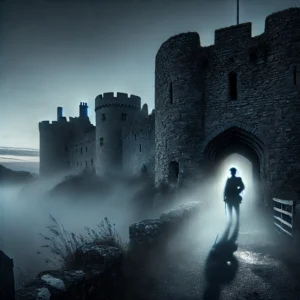Owain Glyndŵr, a name that resonates through Welsh history and culture, stands as a symbol of resistance. Freedom and national pride known as the last native Prince of Wales. Glyndŵr led a rebellion against English rule in the early 15th century that has left an indelible mark on the Welsh identity. This blog explores the life, achievements, and legacy of this remarkable figure, whose story continues to inspire Wales and beyond.
The Early Life of Owain Glyndŵr
Born around 1359 to a noble family in northeast Wales, Owain Glyndŵr (also spelled Owen Glendower) was well-educated and steeped in the traditions of Welsh nobility. He studied law in London and served as a squire under English kings, gaining insight into the workings of English politics and governance—knowledge that would later prove invaluable during his uprising.
The Spark of Rebellion
Glyndŵr’s rebellion began in 1400, fueled by a personal grievance against a neighboring English lord, Reginald de Grey, over a land dispute. This conflict quickly escalated into a full-scale revolt against English domination in Wales. Proclaiming himself Prince of Wales, Glyndŵr rallied support from Welsh chieftains and ordinary people alike, igniting a national movement.
The Glyndŵr Revolt
For nearly a decade, Glyndŵr led a series of successful campaigns, capturing key castles and winning significant battles, such as the Battle of Pilleth in 1402. His vision extended beyond military victories; he sought to establish an independent Welsh state with its own parliament, universities, and church. His efforts even drew the attention of foreign powers, including Scotland and France, who saw potential allies in the Welsh cause.
The Decline of the Rebellion
Despite early successes, Glyndŵr’s rebellion began to falter after 1409. English forces, under King Henry IV and later Henry V, gradually reclaimed lost territory. By 1415, Glyndŵr had disappeared from the historical record. His fate remains a mystery, with legends suggesting he lived out his final years in obscurity, possibly in the protection of loyal supporters.
Owain Glyndŵr’s Legacy
Glyndŵr’s rebellion ultimately failed to achieve Welsh independence, but his legacy endures. Modern Wales continues to draw inspiration from Glyndŵr’s vision of a self-reliant nation. His name adorns streets, schools, and pubs, and his story is retold in books, plays, and films. Perhaps his most enduring legacy is the unyielding pride he instilled in the Welsh people.
Exploring Glyndŵr’s Wales
Visitors to Wales can explore several sites associated with Glyndŵr’s life and rebellion:
- Corwen: Often regarded as his birthplace, this charming town in Denbighshire offers a glimpse into his early years.
- Harlech Castle: Captured by Glyndŵr in 1404, this iconic fortress became his seat of power and is now a UNESCO World Heritage Site.
- Sycharth: The ruins of Glyndŵr’s ancestral home, once a grand medieval hall, evoke the grandeur of his lineage.
Conclusion
Owain Glyndŵr’s story is a testament to the resilience and determination of the Welsh people. His dream of an independent Wales remains unfulfilled, but his vision continues to inspire. As a figure of historical and cultural significance, Glyndŵr’s life serves as a reminder of the enduring power of hope, unity, and the fight for justice.
Share and Subscribe
Enjoyed this story? Share it with your friends and family on social media to spread the haunting legend of the White Lady. Don’t forget to subscribe to our blog at brianwelsh500.com for more captivating tales of Welsh castles, history, and ghostly legends!




